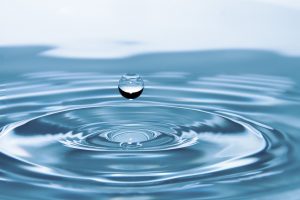
Photo source: Pexels/Pixabay
Whether your home has a private well like mine does or you’re on city water (your water comes from a municipal water treatment plant), you’ll want to tap into the safety of your drinking water, especially if you’re pregnant or preparing infant formula. When you’ve got a baby in the house or on the way, water quality is especially a big deal.
Here’s Why
1. Possible contaminants
Although the U.S. generally has the safest drinking water in the world, drinking water can still be contaminated with lead as we’ve learned from the Flint, Michigan water crisis or other pollutants, such as arsenic, cadmium, copper, mercury, nitrate, radium and selenium.
Drinking water quality is location dependent. Lead is a problem in Flint. But in your area, it could be something else like chromium-6 or Perfluorooctanoic acid (PFOA). Or it could be nothing. But you’ll never know unless you get your water tested. (More on that in a minute.)
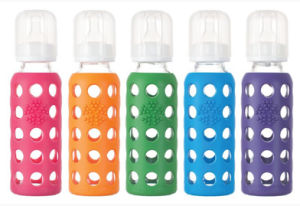
Photo source: Life Factory
2. Babies have immature immune systems
Another reason why water quality matters: Infants and older children are more susceptible to contaminants that may be lurking in drinking water that’s used to make infant formula, etc. because their immune systems are still developing. Similarly, pregnant women and older folks like grandpa and grandma are also at risk because their immune systems are generally less robust, compared to the general population.
Contaminants can cause illness and affect your child’s development. Even low levels of lead in blood, for example, have been shown to affect IQ, a child’s ability to pay attention, and overall academic achievement.
If you use powdered infant formula, you might wonder if it’s okay to mix it with tap water or use tap water to thin baby food.
That is a good question. The answer: It depends on your water quality.
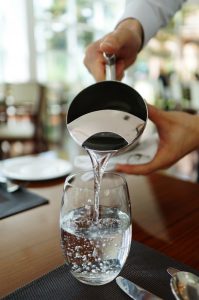
Source: Pexels/Pixabay
Safeguard Your Drinking Water for Preparing Infant Formula and More!
If you have well water (like 15 percent of us do in the U.S.), the quality of your water is your sole responsibility. (Gulp!)
If you have city water, your drinking water is regulated by the United States Environmental Protection Agency (EPA). Still, you’re not off the hook. Water leaving the municipal facility may need to travel through miles of pipe before it gets to your home.
“Contaminants can be picked up along the way, either in the pipes coming to or within your home, if you have a home built before 1986, when federal lead regulations were enacted,” says Pauli Undesser, the executive director and CEO of the Water Quality Association.
And, in all cases, the water quality from municipalities is not designed for special cases, including infants, pregnant women and older folks. “It’s designed for the general public,” Undesser says.
Whether you have city or well water, “consumers should be looking at water quality,” Undesser says. Here’s what to do to safeguard the drinking water in your home so that you know it’s healthy for everyone, especially your baby.
To Babyproof Your Tap Water:
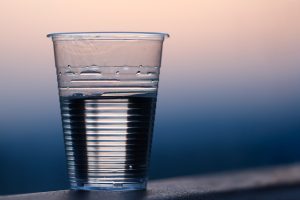
Source: Pexels/Meir Roth
1. Get your water tested for toxins.
If you’re on city water, visit your local water municipality’s website. All municipalities are required to publish an annual water quality consumer confidence report (CCR). Check the CCR for your area. If all is not well with your city water, the CCR will tell you. Talk to the municipal water folks about what’s being done to correct any issues.
Even if everything is okay with your city water, you should still get your water tested to see if any contaminants might be coming into your home from the pipes.
If you have well water, you won’t get a CCR. You’ll have to get your water tested yourself. With an infant in the house, you want to especially make sure your well water doesn’t contain nitrates. Here’s why.
If your well or city water gets a good report, you can use it to prepare infant formula and thin baby food. Go ahead!
2. Look for products that reduce drinking water contaminants.
That said, if you don’t have time to get your water tested or you find that it’s taking a while to get your test results, no worries. Products are available that can safeguard your water supply in the meantime and beyond.
The Water Quality Association’s Gold Seal Program certifies products for specific contaminant reduction. The WQA is one of five certifying bodies in the U.S. accredited to do this work. “There are national standards that we test to,” Undesser says. Any WQA certified product is required to display the Gold Seal as well as what the product is tested and certified to.
There are around 200 contaminants that products can be certified to reduce.
If you find lead in your drinking water and want to reduce it, look for products that have been validated and certified to reduce lead rather than just buying any filtration product that may or may not even have that capability.
If arsenic is the issue, you’ll want to find a product that reduces arsenic. You get the idea.
Certified products to consider, include:
$ A filtered water pitcher
If certified for contaminant reduction, a filtered water pitcher will reduce six to 10 contaminants.
$$ Bottled water
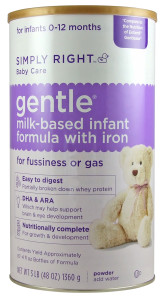
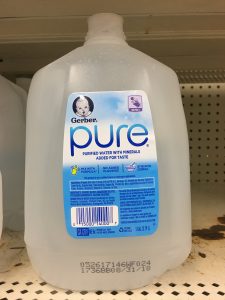 If you’re not sure of the safety of your tap water, the American Academy of Pediatrics recommends using bottled water or bringing cold tap water to a rolling boil for 1 minute (no longer), then cooling the water to room temp for no more than 30 minutes before using it to make infant formula or thinning infant cereal. Here’s more on how to prepare infant formula safely.
If you’re not sure of the safety of your tap water, the American Academy of Pediatrics recommends using bottled water or bringing cold tap water to a rolling boil for 1 minute (no longer), then cooling the water to room temp for no more than 30 minutes before using it to make infant formula or thinning infant cereal. Here’s more on how to prepare infant formula safely.
Not all bottled waters are the same. “Bottled water isn’t any safer than tap water unless it a seal of approval on it,” Undesser says. The WQA’s seal of approval is just one of five such seals of approval to look for on bottled water labels, which signifies that the water has been tested and certified.
That said, it’s tough to find bottled water with any sort of seal of approval. (I did a quick bottled water check at my local Wal-Mart.) But Gerber Pure Water and Wal-Mart’s Parent’s Choice infant water were available. Gerber did their water homework. So, for mixing infant formula (if I wasn’t sure about my tap waterz), I’d go with that. It’s about $1 per gallon.
Note that infant water isn’t sterilized and doesn’t contain fluroide.
$$ A faucet mount
If you’re ok with spending just a little bit more, this is an even better product. “A faucet mount is a really good bang for your buck,” Undesser says. It can reduce up to 65 to 70 contaminants.
$$$ a reverse osmosis system
If you want to cast a wide net, go this route. A reverse osmosis combines three to five different technologies in one filtration system to reduce 100 possible water contaminants or more.
A note about fluoride: In most cases, if your city water is fortified with fluoride (most is at the treatment plant), which is important for baby’s developing teeth, it will continue to come through unless the water filtration product you buy especially says it reduces fluoride. “If someone wanted to reduce fluoride, buy a product that actually does that,” Undesser says.
For more info and how-tos on how to safeguard your home’s water supply, download the Water Quality Association’s Water Treatment for Dummies It’s free!
More facts about water you should know:
-
Babies don’t need straight water

During the first year of life, babies generally don’t need straight water. “They don’t need any additional fluids beyond formula or breast
milk,” says Michael Farrell, M.D., a pediatrician at Cincinnati Children’s Hospital Medical Center. In fact, giving infants straight water can be dangerous because they can easily suffer from water intoxication, a condition in which their developing kidneys can’t excrete water fast enough.
As a result, water builds up in the body and dilutes the electrolyte balance of the blood, causing seizures, coma, even death. “To cause water intoxication, it takes no more than three 8-ounce bottles of water given over 12 hours,” says James P. Keating, M.D., McKim Marriott professor of pediatrics at Washington University School of Medicine in St. Louis.
And take heed. Water intoxication can also happen if your baby swallows too much water during an infant swimming class.
To avoid water intoxication, simply give your baby a little extra breast milk or formula instead of water if you sense he’s thirsty on especially hot days, says Keating.
Diluted formula is another cause of water intoxication. Check the label for proper mixing instructions. And be sure to instruct caregivers to do the same. And avoid giving your baby water if he’s vomiting or has diarrhea. Under those circumstances, an oral electrolyte maintenance solution such as Pedialyte may be necessary. Consult your pediatrician.
2. Water is good for baby’s teeth
For structurally stronger, more decay-resistant teeth, babies and older kids need fluoride. “It’s critical to have fluoride in the water through the age of 14,” says Cynthia Sherwood, D.D.S., a spokesperson for the Academy of General Dentistry. “Fluoride strengthens permanent teeth that are forming under the gum,” says Sherwood.
By the time teeth have erupted, fluoride’s primary job of strengthening teeth from the inside out is over. Generally, if your tap water comes from a public water supply, it’s adequately fluoridated.
But if you:
–Have well water;
–Use bottled or “infant” water that’s not fluoridated for mixing infant formula;
–Generally drink bottled water without fluoride or;
–Have a water filter on your kitchen faucet that removes fluoride from public water;
Talk with your pediatrician or your child’s dentist about having your child take a daily fluoride supplement or fluoride combination multivitamin, advises Sherwood.
Fluoride supplements are available in liquid form for infants and toddlers and chewable tablets for older kids.
Never miss a post!
If you haven’t already, be sure to sign up to receive Babyproductsmom posts and special offers by e-mail. Enter your e-mail in the blinking box–to your right, if you’re on your desktop or scroll down if you’re on your phone, and you’re in!
Copyright Sandra Gordon Writing Resources LLC



Leave a Reply